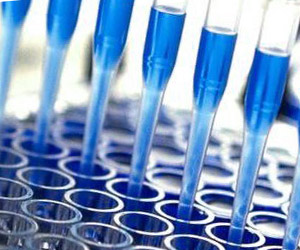
Tips to obtain desired results for a ELISA test
Washing of ELISA Plates
- Follow procedures for the preperation of wash buffer
- Check washers before use to determine they are working properly. Perform routine maitainace.
- Completely fill the wells
- When washing do not allow wells to verflow
- Be certain to wash the specified number of times.
- Completely aspirate contents from wells
- After washing, blot the wells to remove residual fluid
Pipetting of liquid regents
- Regular calibration of pipettes is required as per manufacturer’s instructions
- During pipetting, avoid touching the wall of the wells
- Avoid splashing of reagents & solutions
- Use new pipette tip for each sample, control, standard and reagent addition.
- New tips are advised on the multichannel pipettes for each reagent to be added.
- Long tips are recommended to avoid space between tip top and barrel.
- A continuous check & removal of residual fluid from pipette barrel is required
- Tight fitting of tips to pipettes should be ensured before use.
Use of Microplate
- Microplate must be used at room temperature.
- Level individual breakaway wells evenly in microplate frame to avoid bowing off wells and to avoid poor washing.
- Light sensitive substrate must be added & allowed to react in dark
- Pouches must be dated on day of opening.
- Plate bottom can be washed with wash buffer to remove finger prints.
- Seal unused wells in pouches along with the desiccant.
- Microwells must be kept at horizontal level for washing, reagent addition and plate reading.
- The wells must not be allowed to become dry at any time during assay.
Temperature control in ELISA
- All reagents must be brought to room temperature (22-28 oC) 30 min prior to use.
- Appropriate incubation temperature must be maintained during assay. A low incubation temperature yield OD values, while higher temperatures produce OD values and evaporation in wells can cause edging effect.
- A calibrated thermometer must be used to check temperature at regular intervals.
- Assay steps must be followed and executed as per manual specified time.
- Time & temperature of incubation must be recorded properly.
- OD reading must be taken immediately or as specified after adding stop solution.
Incubation in ELISA
- Its good practice to rotate plates during incubation for better antigen antibody reaction.
- The effect of rotating plates is to mix the reactants completely during the incubation step.
- The mixing ensures that potentially reactive molecules are continuously coming in contact with the solid-phase for the better reactivity.
- The process of diffusion allows limited mixing of the reagents in stationary phase.
Substrate in ELISA
- Use freshly prepared substrate
- Do not hold substrate solution longer than 1 hour
- Follow procedure of working substrate solution
- The temperature of solution is important because it effects the rate of color development.
- Do not add fresh substrate to reagent bottle containing old substrate
Conjugate in ELISA
- All conjugate and its diluents must be store at recommended temperatures.
- Diluted standards must be stored at recommended temperature and should not be used after specified time.
- Working solution of secondary conjugates must be used in specified dilution and within specified time.
Stop Solution in ELISA
- Stop reagents is added to all test well to stop all enzymatic reactions in ELISA.
- After addition of stop solutions, OD values of the test samples are read immediately.
- Stop solutions are strong acids or strong bases must of right molar concentration to bring denaturation of the enzymes.



